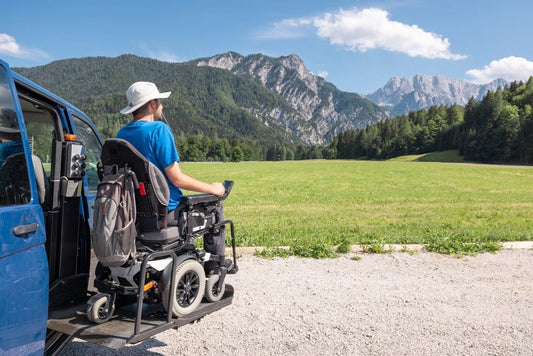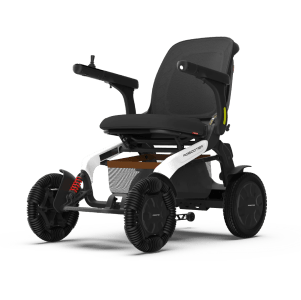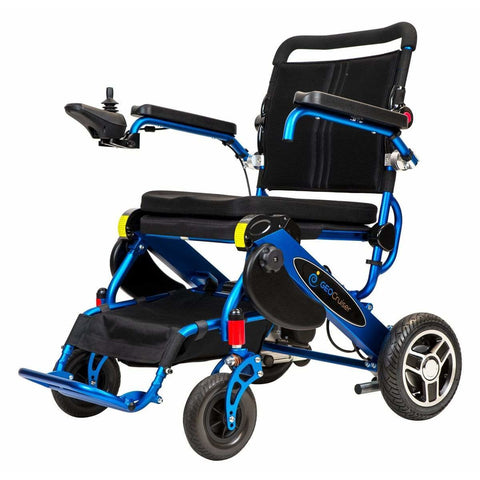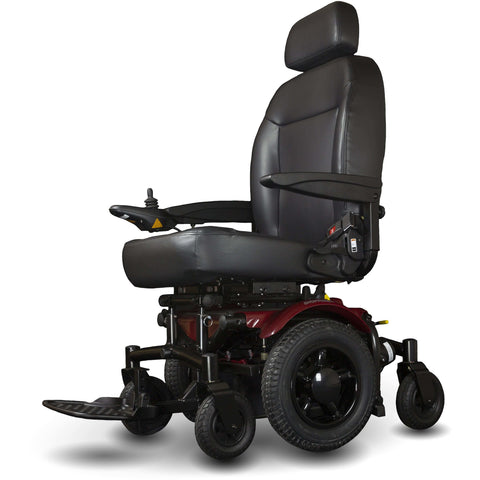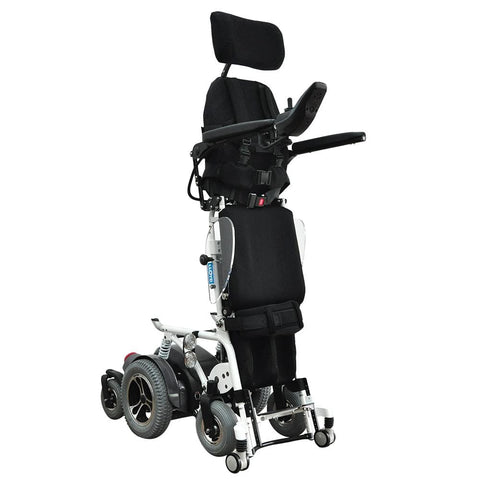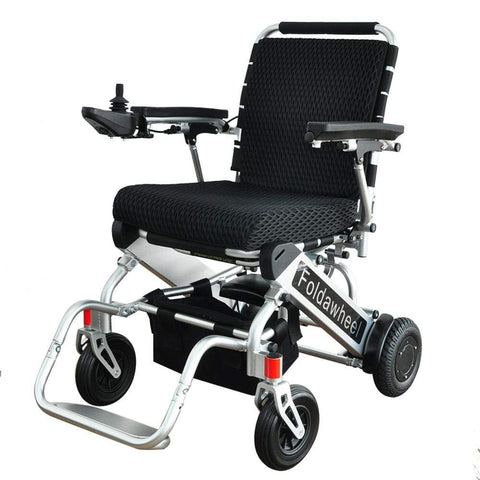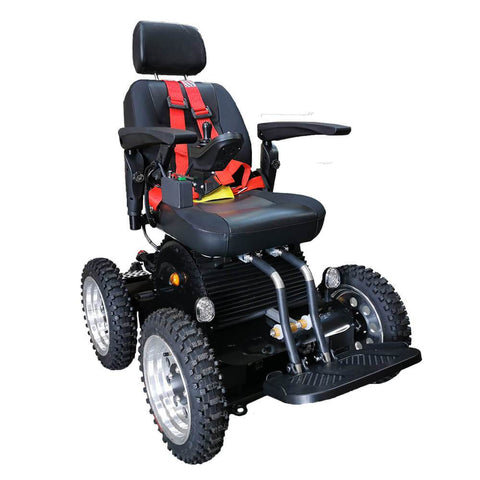Introduction to mobility aids
Mobility aids are devices designed to help people with mobility limitations move around more easily and safely. These devices range from canes and walkers to wheelchairs and scooters. Many of these aids have evolved over the years, incorporating advanced materials and technologies to enhance their effectiveness and comfort. Some mobility aids are specifically designed for indoor use, while others are better suited for outdoor activities. It's important to consider your specific needs and lifestyle when choosing a mobility aid.

Historical evolution of mobility aids
Mobility aids have been around for centuries, with the first recorded use dating back to ancient Egypt. The earliest aids were simple canes and crutches made from wood or metal. It wasn't until the 20th century that advancements in technology led to the development of more complex mobility aids, such as the first manual wheelchairs and prosthetic limbs. These innovations laid the groundwork for the modern mobility aids we see today. The historical evolution of mobility aids showcases the gradual improvement in design and functionality, providing increased independence and mobility for individuals with physical challenges.
Traditional mobility aids
Traditional mobility aids such as canes, walkers, and crutches have been widely used for decades to assist individuals with mobility challenges. These aids provide stability and support, helping people to move around safely and independently. Canes come in various styles, including standard, quad, and offset handles, each offering different levels of support. Walkers, on the other hand, are designed with a frame and either two or four legs to provide stability and balance. Crutches, often used temporarily after an injury, come in different types such as axillary, forearm, and platform crutches, each serving specific purposes. These traditional mobility aids have evolved over the years to incorporate advancements in materials and design, offering improved comfort and functionality for users.
Advancements in mobility aid technology
Advancements in mobility aid technology have significantly improved the lives of people with mobility challenges. Innovations such as lightweight materials, improved battery life, and advanced folding mechanisms have made mobility aids more convenient and user-friendly. Additionally, smart technologies have been integrated into some mobility aids, providing features such as GPS tracking, fall detection, and remote monitoring. These advancements are not only enhancing the independence and safety of users but also contributing to a more inclusive and accessible society.
Types of modern mobility aids
Modern mobility aids come in a variety of types to cater to different needs. Some common types include:
- Manual Wheelchairs: These are propelled by the user or a caregiver pushing the wheels.
- Power Wheelchairs: These are electrically powered and operated using a joystick or control panel.
- Mobility Scooters: These are similar to power wheelchairs but are designed more for outdoor use and longer distances.
- Walkers and Rollators: These provide support for walking and come with wheels for easier movement.
- Crutches and Canes: These provide additional stability and support for walking.
These different types of mobility aids offer various features and benefits, catering to the specific needs and preferences of those with mobility challenges.
Features and functionalities of advanced mobility aids
Advanced mobility aids come with a variety of features and functionalities designed to enhance the user's mobility and independence. Some common features to look for in advanced mobility aids include:
- Foldable Design: Many advanced mobility aids are designed to be foldable, making them easier to transport and store.
- Adjustable Height and Handles: These aids often come with adjustable handles and height settings to accommodate users of different heights and needs.
- Lightweight Materials: Advanced mobility aids are often made with lightweight yet durable materials, making them easier to maneuver and use for longer periods.
- Braking Systems: Some advanced mobility aids are equipped with advanced braking systems for improved safety and control.
- Comfort Features: Look for aids with ergonomic designs, padded seats, and cushioned handles to ensure maximum comfort during use.
- Versatility: Many advanced mobility aids are designed for a variety of terrains, including indoor and outdoor use, to provide users with the flexibility to move around in different environments.
These features and functionalities can greatly enhance the user experience and improve overall mobility, whether for temporary or long-term use.
How mobility aids improve quality of life
Mobility aids, such as canes, walkers, and wheelchairs, are designed to provide support and assistance to individuals with mobility challenges. These devices help people move around more easily and independently, improving their overall quality of life. Mobility aids enable individuals to maintain their independence, perform daily activities, and participate in social interactions. Additionally, advancements in mobility aid technology have led to lighter, more durable, and more ergonomic designs, making them even more effective and comfortable to use. Whether it's a temporary injury or a long-term condition, mobility aids can significantly enhance an individual's ability to navigate their environment and engage in various activities.
Accessibility and inclusivity for individuals with mobility challenges
Mobility aid technology has vastly improved accessibility and inclusivity for individuals with mobility challenges. Innovations like motorized wheelchairs, smart canes, and advanced prosthetics have transformed the lives of those with mobility impairments, granting them greater independence and freedom. These advancements continue to break down physical barriers and enhance the quality of life for individuals with mobility challenges.
Considerations when choosing a mobility aid
When choosing a mobility aid, it's important to consider factors such as your specific mobility needs, lifestyle, and the environment in which you'll be using the aid. Here are a few key considerations to keep in mind:
- Mobility Needs: Evaluate your mobility limitations and the type of support required, such as walking assistance, stability on uneven terrain, or wheelchair accessibility.
- Lifestyle: Consider your daily activities and how the mobility aid will integrate into your routine. For example, if you lead an active lifestyle, a lightweight and portable aid may be more suitable.
- Environment: Take into account the places where you'll be using the mobility aid, whether it's indoors, outdoors, on rough terrain, or in crowded spaces.
- Customization: Look for customizable features that can be adjusted to provide a comfortable and personalized fit, such as adjustable handles, seat height, or weight capacity.
By considering these factors, you can make an informed decision when choosing a mobility aid that best suits your needs and enhances your mobility and independence.
Conclusion: Future developments in mobility aid technology
Future developments in mobility aid technology promise to revolutionize the way individuals with mobility challenges navigate their daily lives. Innovations such as advanced AI algorithms, lightweight materials, and improved battery life are paving the way for enhanced mobility aids. These advancements aim to provide greater independence, comfort, and convenience for users. Additionally, ongoing research and development initiatives are focused on creating more inclusive and user-friendly designs, ensuring that individuals with diverse needs can benefit from these technologies. As the field of mobility aid technology continues to evolve, we can anticipate even more transformative developments that will positively impact the lives of users.




